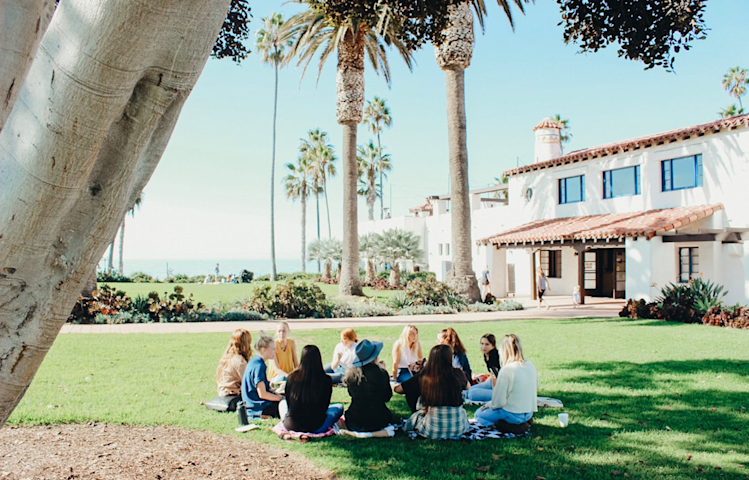Communities & Memberships
12 Simple Community Management Best Practices for 2025
Managing online communities can be a challenge when you’re starting out. Here are some tips to make your work easier.
Author
Last Updated
February 6, 2025

Even in today’s highly connected world, many people still feel more disconnected from one another than ever.
Fortunately, online communities have provided a great space for people to find others with similar interests, goals, and aspirations. And because of this, cultivating an online community for your brand is a great way to both become more connected and make money doing what you love.
But an online community can’t sustain itself on its own. The most successful Hosts spend time thinking about how to manage an online community and provide value for their members—a process that helps them build thriving communities and find success.
In this post, we’re going to talk about how to manage an online community. We’ll give you 12 community management best practices to help you get the most out of your community, everything from dealing with people to getting the business model right. And at the end we’ve compiled it into a checklist for community management best practices.
Ready? Here we go!
If you want more support in building your online community, come join OUR Mighty Community for free and meet other new and established community owners! We’d love to meet you. Join for free!
What is an online community?
An online community is a group of people who have come together because they share a common goal, interest, or experience.Practically any topic can be used to foster an online community, as long as you can unify people around shared motivation.
That being said, an online community isn’t just the people that comprise it. Online communities also must have a digital space to convene. That way, members can have the tools to interact, connect, and share with one another.
Try Our Community Name Generator
Our AI engine is here to help you create a community name that feels like magic. Just share a few words about who your community is for and we’ll get to work.
Examples: coaching clients, meditation novices, vegan chefs, dog lovers, aspiring entrepreneurs, etc.
The names generated by Mighty Co-Host™ are examples only and may be used by other businesses or subject to third-party rights. For more information, check our Terms
How to manage an online community: The human side
1. Communicate a Big Purpose
Our first suggestion for how to manage an online community is to start off with a Big Purpose. You’re bringing together a group of people for a reason, right? Part of managing online communities is being clear about why everyone is together and what you’re working to build.
Think of your big purpose as the motivation for your community. It’s something that can only be accomplished by bringing together the exact people you have in your community.
If you’re unsure of how to communicate your big purpose, try this template we created to help you out:
Your big purpose is all about making clear what your online community is trying to achieve. When the steps are clear for what your online community is working to accomplish, it makes potential members more willing to join your movement.
2. Introduce guidelines and expectations
When you create an online community, you bring together like-minded people. But even your Ideal Members will still have their own unique experiences and approaches.
What we mean by this is what one person deems okay, might be offensive to someone else. So, having concrete guidelines and expectations for how members should communicate with one another is an important part of how to manage an online community.
When you have clear community guidelines, it will help keep the conversation positive, constructive, and on track with your Big Purpose. You’ll bring together a bunch of rad folks, but it can be easy for misunderstandings to happen in online environments. When your expectations and intentions are clear, your online community is a safer space.
In general, there are two types of community rules or guidelines you can think about:
Rules for how to treat others (e.g. no personal attacks)
Rules for how to engage with the community platform (e.g. no spam or overly self-promotional posting)
You can introduce the guidelines and expectations for your community in your welcome sequence, which we’ll talk about below.
3. Empower your Hosts
While it’s important to HAVE rules, it doesn’t do much good without enforcement. While most community members are respectful and kind, and many communities go for years without needing to enforce the rules, it’s good practice to have a Host(s) or Moderator(s) who are able to if necessary.
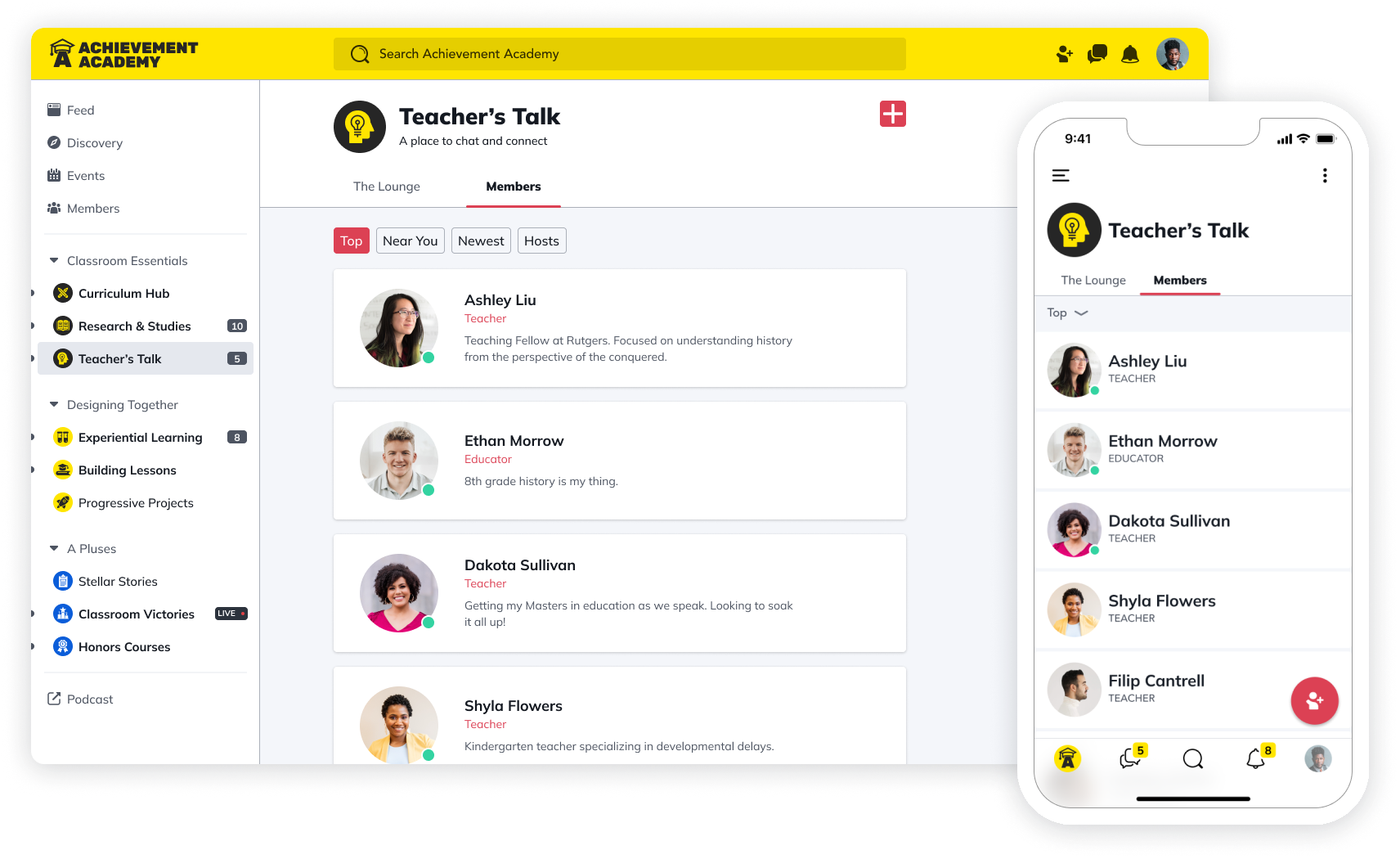
You can also have a set system for how to approach “enforcement,” for example, 3 strikes and you’re out.
Put this in place, but don’t stress about it too much. You may never have to use it, but if you do, you’ll be thankful you clearly communicated the rules and put the people in place to make sure they’re being followed.
4. Model the types of interactions you want to see
When you’re tempted to snap back at a member or to air your frustrations in the community discussions, remember, it’s important to model the type of behavior you want to see.
The best community leaders lead by example, modeling the types of interactions they’d like to see in their communities. If you’re wondering how to manage an online community, then first think about what you appreciate in the communities you’re a part of.
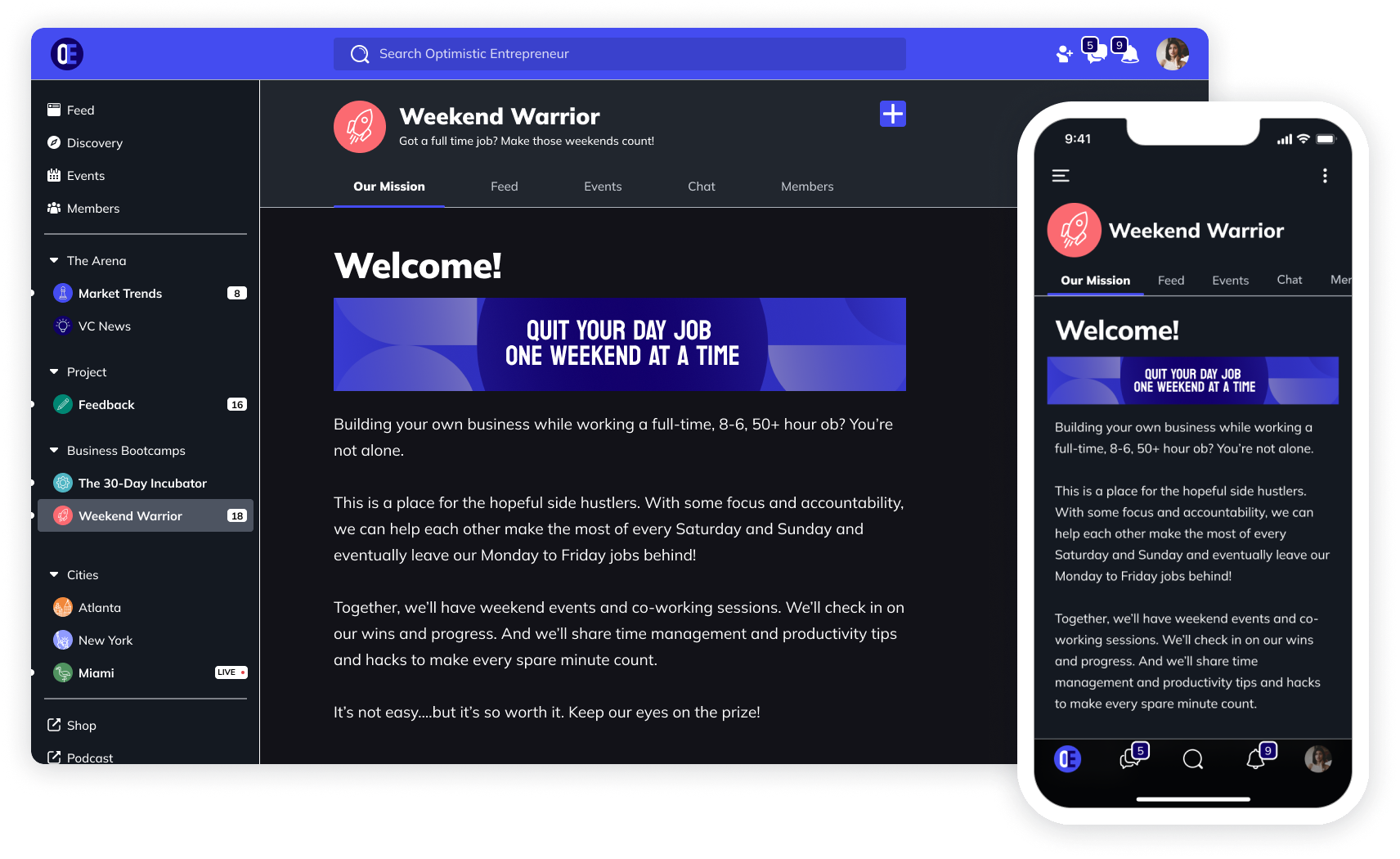
When we say “model” the types of interactions you want to see, we’re saying that you should be active in the community as well. Early on, as you’re gaining your initial members, try to comment on their posts. Ask questions, provide feedback, and give compliments. In short, be available to your community. When you’re an active and positive voice in the community, members will model this.
How to manage an online community: The business side
Community management is about more than just setting up moderation rules and keeping people engaged (although it’s important). It’s also about managing the business side of your online community.
Honestly, a Mighty Network isn’t complicated to manage. And we’ve done a lot of the prep work by giving you a Mighty Checklist when you launch to get your community set up.
But with this done, here are a few more of the business tools that will help you manage an online community:
5. Build your plans
Think about how you’re going to charge for your community. For example, you can sell a community membership, membership to a subgroup, courses, or bundles of these. There’s no one way to monetize or set pricing for your community, but make a plan for how you’re going to do it.
6. Tweak your sales process
Some communities grow through elaborate sales funnels. Some grow through word of mouth or personal invitation. There’s no one right way to grow, but it’s important to pay attention to what works and how you’ll sell your community.
Will you market it to an existing email list with a special offer? Will you spread the word on social media? Create a webinar? Invite 20 people you know well to join?
What have you tried that has worked well? What acquisition channels are total duds that you could drop?
Figure out your customer acquisition model, and then connect this to the plans you already set up.
7. Check your analytics
Even as your community grows, it’s important to watch your analytics to see what’s working and what’s not. Where are your members hanging out? Which groups are they spending time in? Which plans are selling?
On a Mighty Network, you get access to Mighty Analytics which includes a ton of actionable data, from where your members spend time to how much your plans are converting.
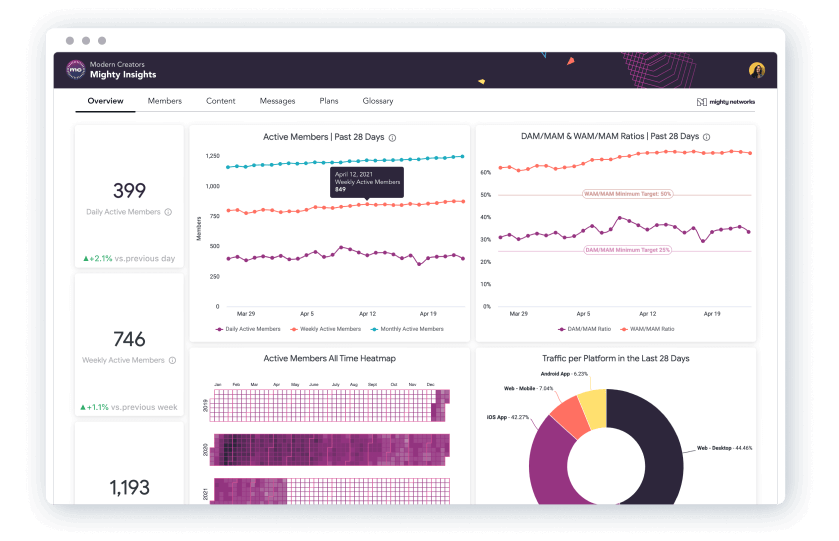
How to manage an online community: The ops side
8. Create a welcome sequence
A welcome sequence is also a really important part of managing an online community. You can automate a lot of it on a Mighty Network, so that each new member has the same experience.
We’ve got a great video about how to create a welcome sequence, from creator Louise Henry.
9. Hold regular live streams & live events
Hosting a regular live stream or live event is another great idea for how to manage an online community. Why? Because it gives you a chance to talk directly (with your voice and face!) to your members and for them to talk to each other.
It could be you making an announcement, holding a webinar, or something else. What we’re getting at is using live streams and events are a way to give updates to your members, provide lectures, or even host things like interviews for members to watch easily.
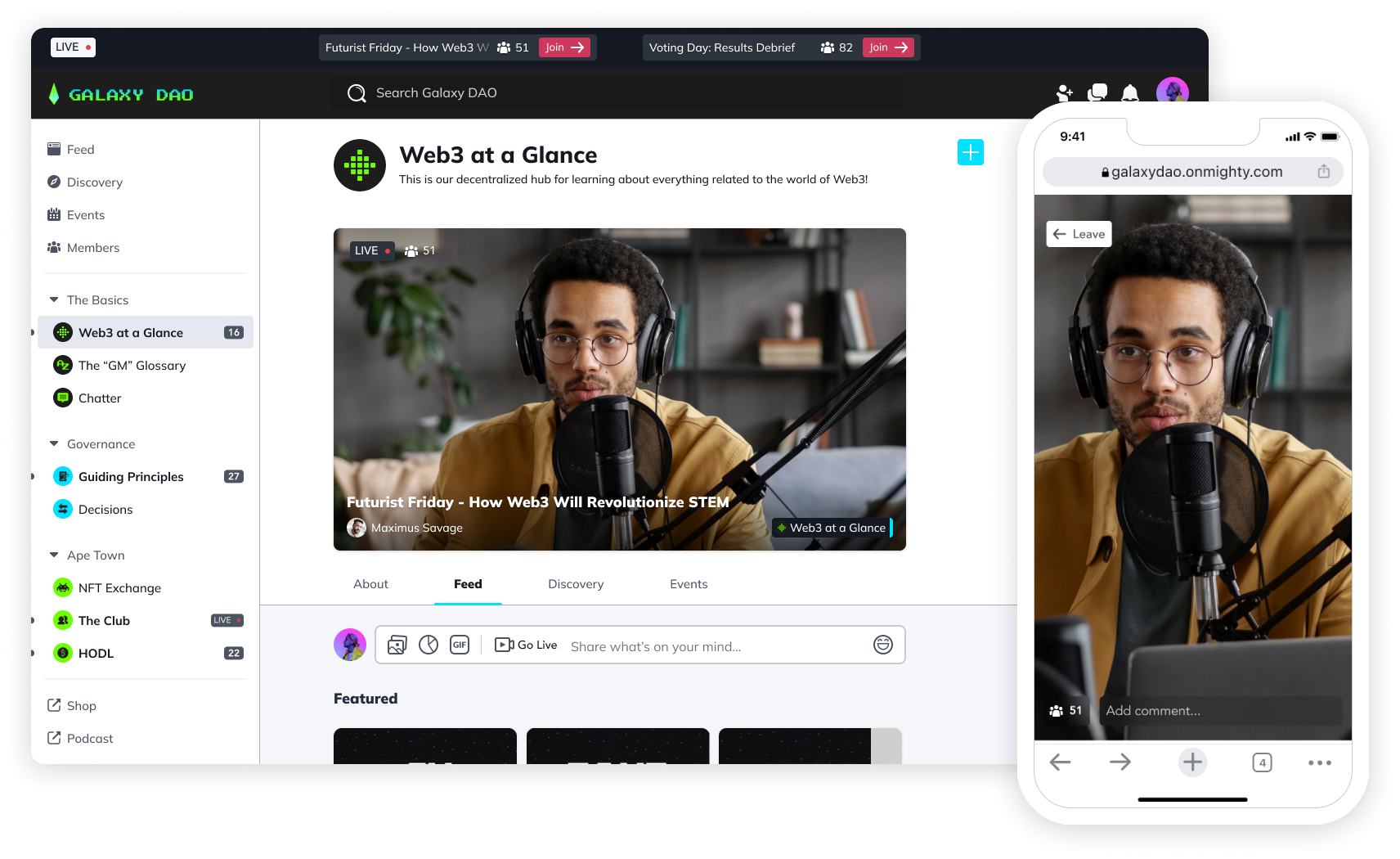
Live streams allow you the rare opportunity to humanize yourself in front of your online community and build trust. We aren’t saying that the awesome content you post is not genuine, it’s just highly curated. Putting yourself out there for your members to see you as a human being adds some personality and flair to your persona.
For example, in a community based around health and wellness, you might feature a talk about a new wellness concept. Or you could answer some questions posted on a discussion board.
Regular live sessions are a good way to remind people that a real person (you!) built this amazing online community and that you’re invested in keeping it around.
10. Facilitate networking opportunities
Another important aspect of online community management is encouraging your members to network. Networking helps you and your members form connections and discover new opportunities (both professional and personal).
Managing an online community effectively means that you set your members up for success. A great way of doing that is facilitating ways for members to meet with one another, to share experiences and ideas. This is great for community engagement, and it also takes some work off of your shoulders.
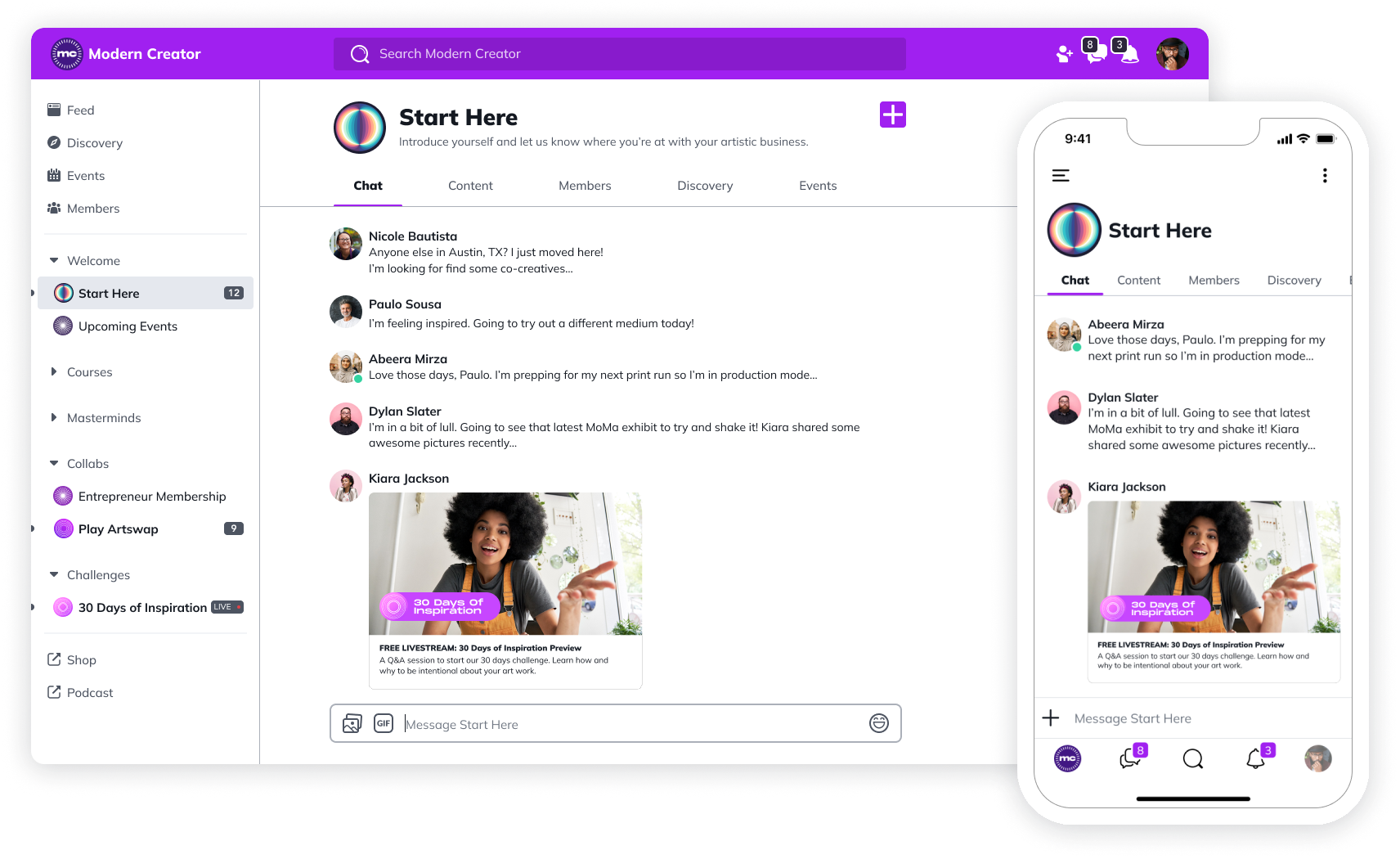
If you’re curious about some simple ways to facilitate networking opportunities, consider these:
Schedule a weekly video hangout. Offering low-stakes video hangouts is a great way to give members opportunities to meet each other. You don’t need a highly structured event either. It could be one large group call or you can split people up into breakout groups.
Utilize discussion boards. When you’re planning how to manage your online community, don’t underestimate discussion boards. They are a great way to foster member interaction. Again, this doesn’t take much on your end besides posing the initial question, idea, challenge, or whatever else.
Create polls and Q&As. In addition to discussion boards and video hangouts, smaller interactions like polls and Q&As are simple ways to keep members active. Both of these options don’t involve large time commitments but can be beneficial for you in understanding your members a bit better.
Facilitating networking opportunities to your online community adds value and another incentive for members to stick around and interact with one another.
11. Highlight members’ accomplishments
So you’ve brought together a group of people all working toward a common goal. That’s great! But sometimes, no matter how clear your purpose, guidelines, and expectations are, it can still be challenging to convince people they will achieve their goals through your community.
Highlighting your members’ accomplishments is a great way to show that goals are being met. And you can highlight them in a number of ways. Here are a few suggestions:
Highlight member stories in a monthly post. Once you’ve had some members complete your content, you can ask them to share their stories with you. These stories can make for great posts on your website that your members can read and discuss in the comments.
Host a member spotlight event. In place of (or in addition to) your scheduled webinars, you could invite members to join you in a live event. This could be a panel pertaining to their success story or even a live interview. Whatever angle you take, it’s a great way to shine a spotlight on members and get the community rallying together.
Have members write guest posts. Another great way to highlight member accomplishments is to invite them to write about them. Guest posts allow your members the autonomy to tell their stories how they’d like to tell them. It’s nice to hear how great the online community is from the creator. But it’s much more effective to hear about it from the people who’ve actually completed your content.
Highlighting members’ accomplishments is a form of giving back to your community, while also providing opportunities for interactions. We believe that peoples’ achievements should be shared, don’t sleep on the opportunity to highlight your supporters.
12. Listen to your members
One of the most important tips for how to manage an online community is also a simple one: listen to your members.
When we say listen to your members, we mean that your job becomes easier when you pay attention to what your members want. You can plan how to manage your online community for months but there will still be things you don’t anticipate. That’s completely okay!
Your members are your greatest asset. Don’t be afraid to ask them about what they like in your online community, and also what they don’t. Instead of coming up with new features and events by yourself, ask them what they’d like to see more of.
If you’re thinking that asking your members for advice on what’s next will take away authority, don’t. In fact, your willingness to listen to their desires and needs creates opportunities for growth, value, and deeper connections with your online community.
Community management best practices checklist
If you’re read the steps above, we can gather these into a checklist for online community management best practices:
The human side
Communicate a Big Purpose
Introduce guidelines and expectations
Empower your hosts
Model the interactions you want to see
The business side
Build your plans
Tweak your sales processes
Check your analytics
The ops side
Create a welcome sequence
Hold regular live streams & events
Facilitate networking opportunities
Highlight members’ accomplishments
Listen to your members
It’s go time!
We’ve talked a lot about how to manage an online community, but none of that matters until you get started.
By following these tips, we believe it will make online community management easier for you in the long run. At the end of the day, managing online communities come down to understanding the wants and needs of your members and delivering on them. When members feel that the space you’ve created facilitates real connections and achievable goals, they’re much more likely to stick around.

Now it’s time to get started creating your online community. We’ll be looking forward to what you build.
Ready to launch your online community?
Ready to start building your community?
Start a free 14-day trial to explore Mighty—no credit card required.
More like this
Join Mighty Community
Learn the principles of Community Design™ (and see them in action) alongside thousands of creators and entrepreneurs. It's free to join!

Online Courses
Creating a Course
Teaching a Course
Course Platforms
Selling a Course
Communities & Memberships
Community Platforms
Managing a Community
Building a Community
Growing a Community
Monetizing a Community
Content Creation
Creators & Entrepreneurs
Monetization
Content Creation
Starting a Business
Website Builders
Creating & Managing a Website
Events
Event Platforms
Hosting & Marketing Events
Branded Apps
Creating a Mobile App
Coaching Apps
Community Apps
Coaching
Mastermind Groups
Starting a Coaching Business
Coaching Platforms
Filter by Category
Online Courses
Communities & Memberships
Creators & Entrepreneurs
Events
Branded Apps
Coaching



















